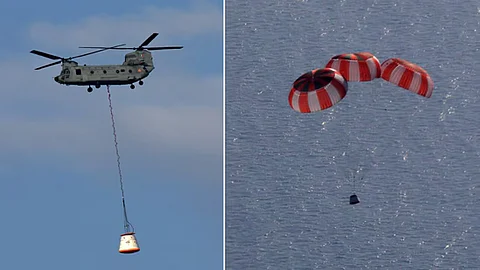

On August 24, 2025, India moved one step closer to putting its citizens in space as ISRO completed its first Integrated Air Drop Test (IADT-1) for the Gaganyaan mission.
The test was dramatic: a five-tonne crew module mock-up was airlifted by a Chinook helicopter and dropped from several kilometres above the ground. Seconds later, a carefully sequenced series of parachutes deployed, gently lowering the capsule to safety.
The exercise was not just about hardware. It was about building confidence that when astronauts return from space, their capsule will slow down, survive re-entry, and splash into the ocean safely. “The first end-to-end demonstration of the parachute system is a success,” ISRO announced.
The Gaganyaan programme is a national effort, involving the Air Force, Navy, DRDO, and Coast Guard. Defence Minister Rajnath Singh described it as a landmark for “Atmanirbhar Bharat in space.”
Union Minister Jitendra Singh recently outlined that India’s human spaceflight ecosystem is taking shape — from propulsion and life-support systems to a new training centre and modified launch pads. Ahead lie more test flights, including TV-D2 and G1, designed to validate every system before humans are onboard.
India’s ambitions extend far beyond this mission. The roadmap includes a permanent space station by 2035 and a moon landing by 2040. But for now, the success of IADT-1 proves that the parachutes — and India’s space programme — are opening as planned.